Abstract
A randomised double blind study was carried out with 50 men who had ST segment depression of 0.1 mV or more after a modified two-step exercise test. Rate and duration of exercise were the same for the last of each subject's several pretreatment tests as for his tests after 4 and 8 weeks of treatment with placebo or testosterone cypionate, 200 mg, intramuscularly weekly. The sum of ST segment depression in leads II, V4, V5, and V6 taken immediately, and 2, 4, and 6 minutes after exercise did not change significantly after 4 or 8 weeks of placebo treatment, but did decrease by 32 per cent (P less than 0.0001) and 51 per cent (P less than 0.0001) after 4 and 8 weeks, respectively, of testosterone cypionate treatment. The mechanism by which testosterone cypionate treatment results in lessened postexercise ST segment depression is not established.
Full text
PDF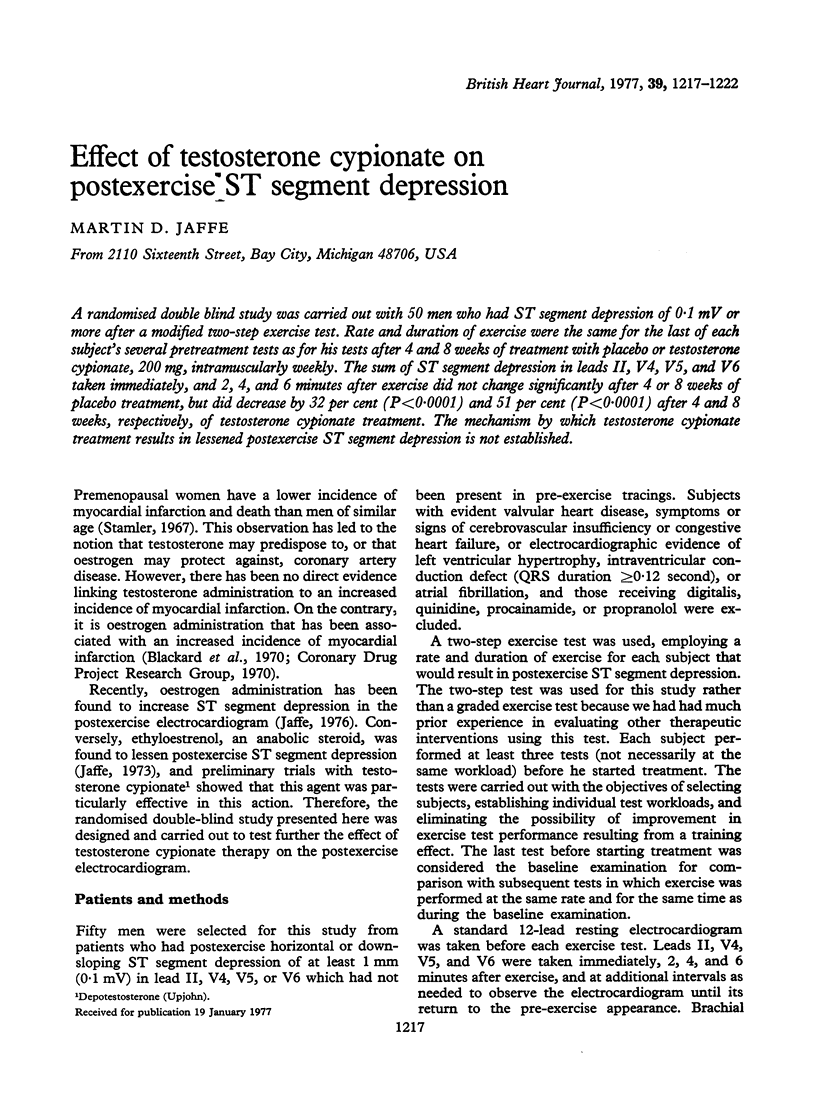
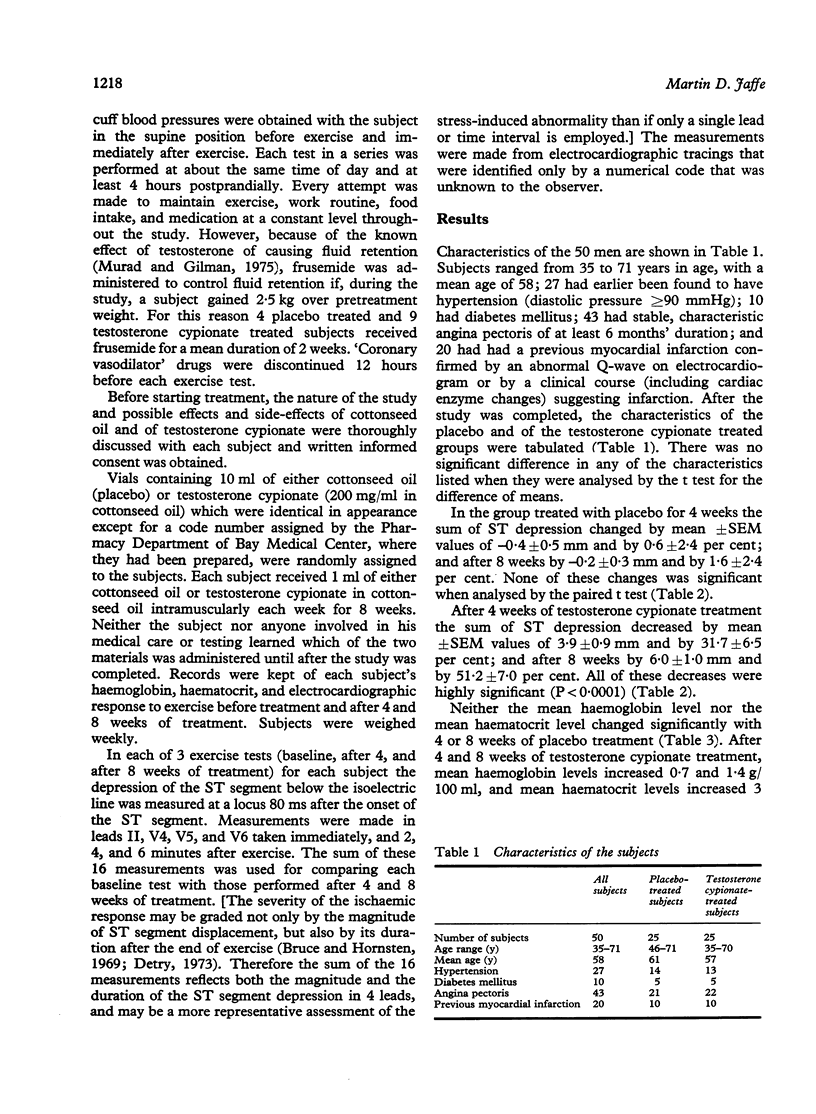

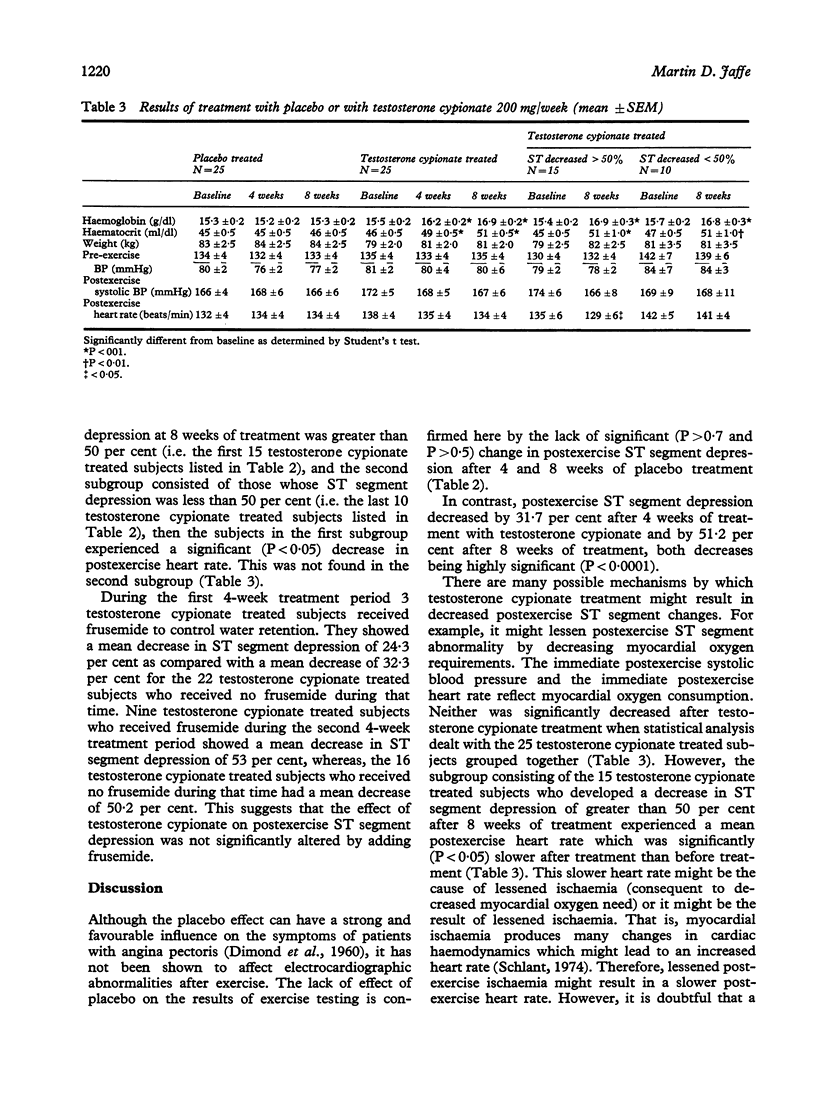
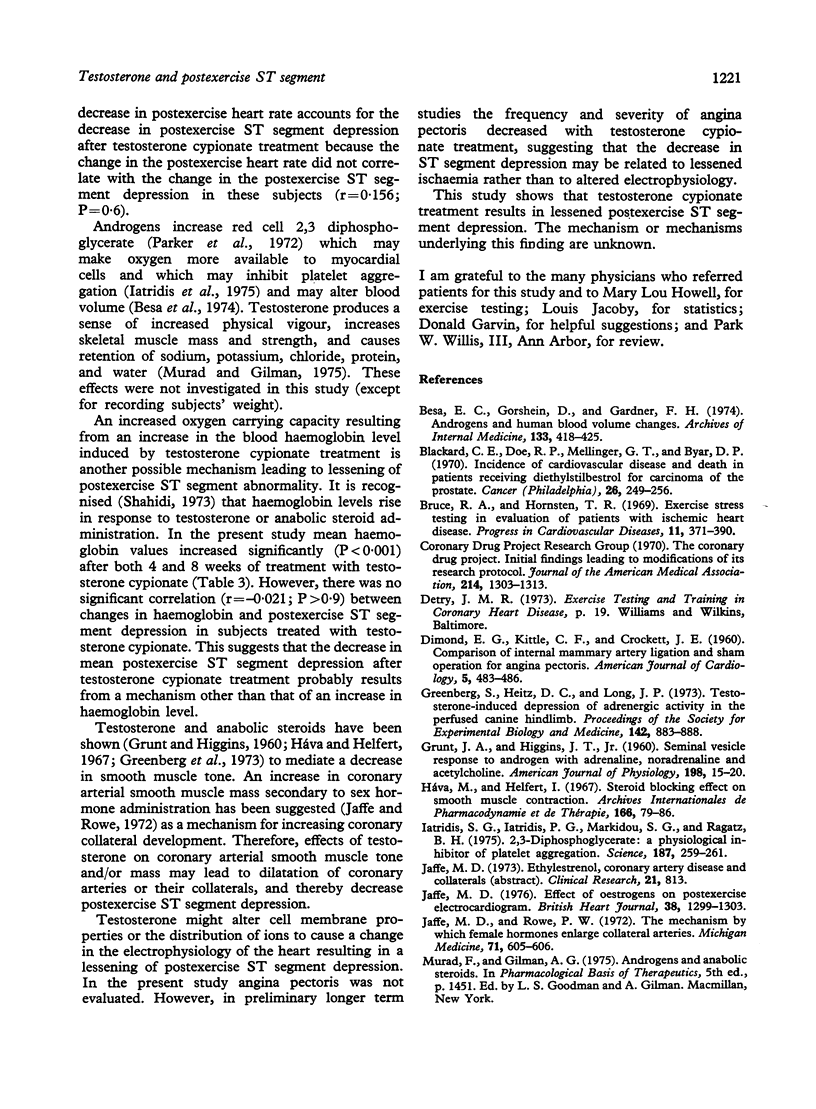
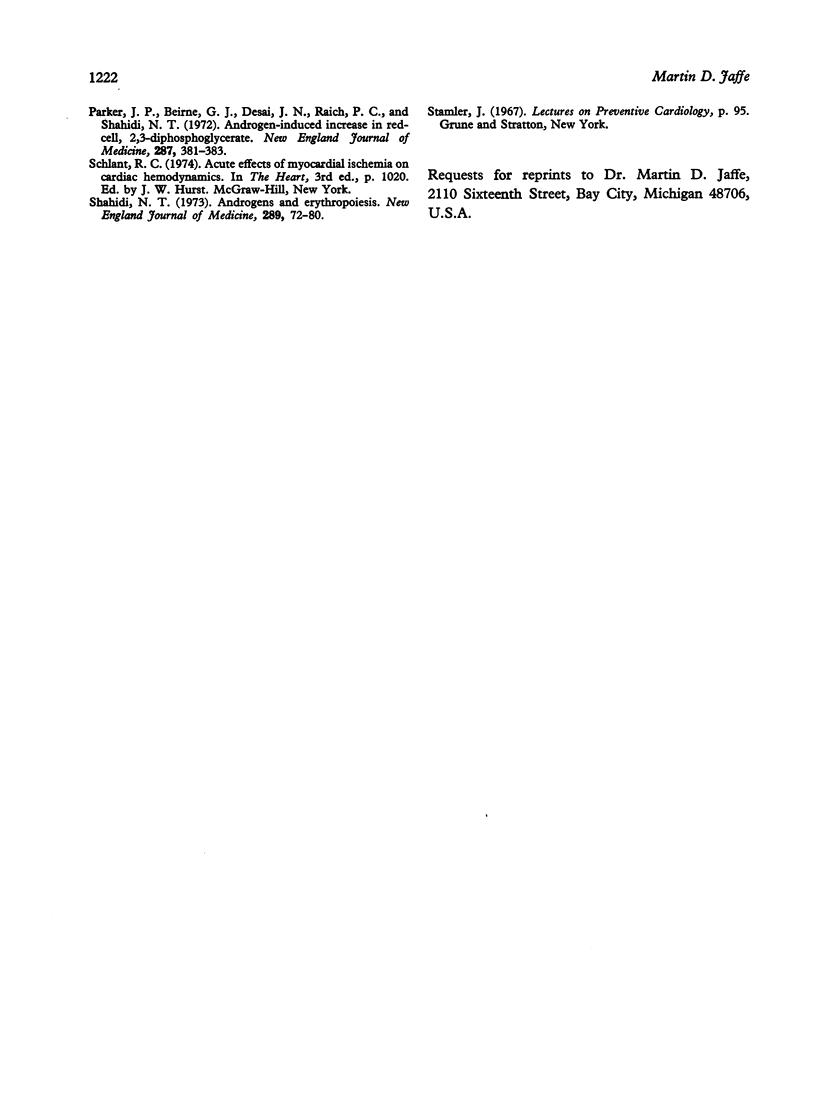
Selected References
These references are in PubMed. This may not be the complete list of references from this article.
- Besa E. C., Gorshein D., Gardner F. H. Androgens and human blood volume changes. Comparison in normal and various anemic states. Arch Intern Med. 1974 Mar;133(3):418–425. [PubMed] [Google Scholar]
- Blackard C. E., Doe R. P., Mellinger G. T., Byar D. P. Incidence of cardiovascular disease and death in patients receiving diethylstilbestrol for carcinoma of the prostate. Cancer. 1970 Aug;26(2):249–256. doi: 10.1002/1097-0142(197008)26:2<249::aid-cncr2820260202>3.0.co;2-7. [DOI] [PubMed] [Google Scholar]
- Bruce R. A., Hornsten T. R. Exercise stress testing in evaluation of patients with ischemic heart disease. Prog Cardiovasc Dis. 1969 Mar;11(5):371–390. doi: 10.1016/0033-0620(69)90027-9. [DOI] [PubMed] [Google Scholar]
- DIMOND E. G., KITTLE C. F., CROCKETT J. E. Comparison of internal mammary artery ligation and sham operation for angina pectoris. Am J Cardiol. 1960 Apr;5:483–486. doi: 10.1016/0002-9149(60)90105-3. [DOI] [PubMed] [Google Scholar]
- GRUNT J. A., HIGGINS J. T., Jr Seminal vesicle response to androgen with adrenaline, noradrenaline and acetylcholine. Am J Physiol. 1960 Jan;198:15–20. doi: 10.1152/ajplegacy.1960.198.1.15. [DOI] [PubMed] [Google Scholar]
- Greenberg S., Heitz D. C., Long J. P. Testosterone-induced depression of adrenergic activity in the perfused canin hindlimb. Proc Soc Exp Biol Med. 1973 Mar;142(3):883–888. doi: 10.3181/00379727-142-37137. [DOI] [PubMed] [Google Scholar]
- Háva M., Helfert I. Steroid blocking effect on smooth muscle contraction. Arch Int Pharmacodyn Ther. 1967 Mar;166(1):79–86. [PubMed] [Google Scholar]
- Iatridis S. G., Iatridis P. G., Markidou S. G., Ragatz B. H. 2,3-diphosphoglycerate: a physiological inhibitor of platelet aggregation. Science. 1975 Jan 24;187(4173):259–261. doi: 10.1126/science.1111100. [DOI] [PubMed] [Google Scholar]
- Jaffe M. D. Effect of oestrogens on postexercise electrocardiogram. Br Heart J. 1976 Dec;38(12):1299–1303. doi: 10.1136/hrt.38.12.1299. [DOI] [PMC free article] [PubMed] [Google Scholar]
- Jaffe M. D., Rowe P. W. The mechanism by which female hormones enlarge collateral arteries. Mich Med. 1972 Jul;71(20):605–606. [PubMed] [Google Scholar]
- Parker J. P., Beirne G. J., Desai J. N., Raich P. C., Shahidi N. T. Androgen-induced increase in red-cell 2,3-diphosphoglycerate. N Engl J Med. 1972 Aug 24;287(8):381–383. doi: 10.1056/NEJM197208242870804. [DOI] [PubMed] [Google Scholar]
- Shahidi N. T. Androgens and erythropoiesis. N Engl J Med. 1973 Jul 12;289(2):72–80. doi: 10.1056/NEJM197307122890205. [DOI] [PubMed] [Google Scholar]


